Country guides

Things to do in India
India offers an astounding diversity of people, landscapes, sights and sounds. Visitors will find a rich tapestry of attractions to enjoy, the scope of which is unmatched anywhere else on earth.
Spiritually inclined tourists make for the temples and ashrams of the north, nestled in beautiful Himalayan cities such as Rishikesh, the birthplace of Yoga. Away from the mountains, Delhi dominates the desert plains. The heaving, ancient capital is a mind-blowing mix of history and humanity.
Delhi is just one of India's incredible collection of cities, which includes Kolkata, the cultural capital, Kochi, the Queen of the Arabian Sea, and Mumbai, a major port city, and home to Bollywood. Varanasi, on the banks of the Ganges, may well be the most fascinating of the lot. This sacred Hindu destination is one of the oldest continually inhabited cities on earth.
Jungles and forests such as the Sundarbans, the largest mangrove forest in the world, and the stunningly beautiful Sangla valley, are home to endemic flora and fauna. Lucky visitors to some of the national parks may be greeted by a glimpse of the rare, legendary Bengal Tiger.
India's architectural treasures need no introduction. The immortal Taj Mahal is one of the most recognisable monuments in the world. Tourists will also be fascinated by the opulence of Tirupati Balaji, the richest temple in the world, and Golden Temple, one of Sikhism's holiest shrines.
India is synonymous with vibrant, colourful festivals such as Holi, the festival of colours, and Diwali, the festival of lights. The spicy cuisine is superb, enjoyed by millions of people worldwide. Indian music, theatre and film are unique.
The endless list of attractions simply goes on and on in this vast and varied land.
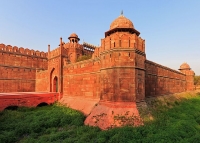
Red Fort
The Red Fort, known locally as Lal Quila, is Delhi's signature attraction, rising high above the clamour of Old Delhi as a reminder of the power and prosperity of the Mogul Empire.…
Red Fort
The Red Fort, known locally as Lal Quila, is Delhi's signature attraction, rising high above the clamour of Old Delhi as a reminder of the power and prosperity of the Mogul Empire. The massive sandstone walls were built in the 17th century to keep out marauding invaders, and still dominate the city's skyline today. Inside is an array of exquisite buildings, which once provided the living quarters for Shah Jehan, his courtiers, family and staff of three thousand. Visitors can marvel at the intricate decoration and only imagine the scenes here at the empire's height, when the walls were studded with precious stones and a 'stream of paradise' drove an ingenious air conditioning system.
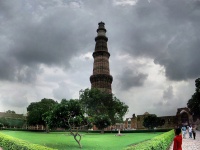
Qutub Minar
The Qutub Minar is a mammoth tower that was built between 1193 and 1369 to symbolise Islamic rule over Delhi, and to commemorate the victory by Qutab-ud-din over the city's last Hi…
Qutub Minar
The Qutub Minar is a mammoth tower that was built between 1193 and 1369 to symbolise Islamic rule over Delhi, and to commemorate the victory by Qutab-ud-din over the city's last Hindu king. Standing 238 feet (72m) tall, the tower is decorated with calligraphy representing verses from the Quran, and tapers from 50 feet (15m) at the base to just eight feet (2.5m) at the top. There are five distinct storeys, each encircled with a balcony. The first three are built of red sandstone, and the upper two are faced with white marble.
Website www.qutubminar.org/
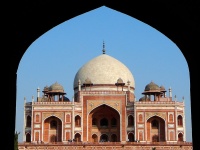
Humayun's Tomb
Humayun's Tomb is one of the best-preserved and most beautiful examples of Mogul architecture in Delhi, and is often seen as a forerunner of the Taj Mahal in Agra. Building on the …
Humayun's Tomb
Humayun's Tomb is one of the best-preserved and most beautiful examples of Mogul architecture in Delhi, and is often seen as a forerunner of the Taj Mahal in Agra. Building on the tomb started in 1564 after the death of Humayun, the second Moghul emperor, and its construction was overseen by Haji Begum: his senior widow and the mother of Akbar. The tomb is an octagonal structure capped by a double dome that soars 125ft (38m) into the sky, and is set in a formal Persian garden. Some careful restoration work has been done on some of the buildings and art but nothing important has been altered.
Website www.humayunstomb.com/

Taj Mahal
The Taj Mahal is one of the world's most recognisable and evocative sights. Set overlooking the River Yamuna and visible from Agra Fort in the West, the Taj was built by Shah Jahan…
Taj Mahal
The Taj Mahal is one of the world's most recognisable and evocative sights. Set overlooking the River Yamuna and visible from Agra Fort in the West, the Taj was built by Shah Jahan to enshrine the body of his favourite wife, who died giving birth to her 14th child in 1631. When his devout and austere son Aurangzeb seized power, Shah Jahan was interned in Agra Fort, where he lived out his final years gazing wistfully at the Taj Mahal in the distance. When he died there in January 1666 with his daughter Jahanara Begum at his side, his body was carried across the river to lie alongside his beloved wife in the peerless mausoleum.
Website www.tajmahal.gov.in
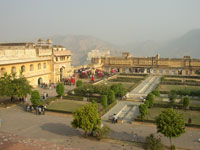
Amber Palace
Situated on the crest of a hill seven miles (11km) north of Jaipur is Amber: capital of the Kuchwaha Rajputs from 1037 to 1728. The city-palace is protected by towering outer walls…
Amber Palace
Situated on the crest of a hill seven miles (11km) north of Jaipur is Amber: capital of the Kuchwaha Rajputs from 1037 to 1728. The city-palace is protected by towering outer walls, and a further wall runs for miles along the hills surrounding the palace. For many, the most memorable part of a trip to Jaipur is the journey up the palace ramparts, through a succession of vast gates, on the back of a painted elephant, Maharaja-style. Inside are the ruins of a once-great palace: a wonderful example of Rajput architecture, with Mogul influences.
Website www.amberfort.org/
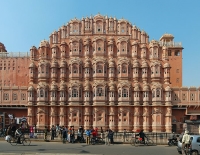
Palace of the Winds (Hawa Mahal)
The Palace of the Winds is Jaipur's most acclaimed attraction. Built in 1799, it is situated on the edge of the City Palace complex overlooking one of the city's bustling main stre…
Palace of the Winds (Hawa Mahal)
The Palace of the Winds is Jaipur's most acclaimed attraction. Built in 1799, it is situated on the edge of the City Palace complex overlooking one of the city's bustling main streets, and was constructed to offer the women of the court a vantage point, behind stone-carved screens, from which to watch the activity in the bazaars below. The five-storey building is shaped like a crown adorning Lord Krishna's head, and contains over five hundred finely screened windows and balconies. Although the palace's primary appeal is its ornate and finely carved pink façade, visitors can also go inside and see the intricate, honeycombed stonework of the original screens close up.
Website www.hawa-mahal.com/
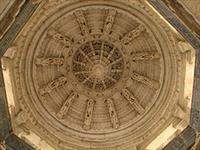
Jain Temples of Ranakpur
The Jain Temples of Ranakpur lie forty miles (60km) north of Udaipur. They form the largest Jain temple complex in India, and boast some truly staggering marble work. The main temp…
Jain Temples of Ranakpur
The Jain Temples of Ranakpur lie forty miles (60km) north of Udaipur. They form the largest Jain temple complex in India, and boast some truly staggering marble work. The main temple was built in 1439, and is dedicated to the first tirthankara Adinath, whose image is enshrined in its central sanctuary. The temple is two or three storeys high in parts, and its roof, topped with five large shikharas, undulates with tiny spires that crown the small shrines to Jain saints lining the temple walls. Within are 1444 pillars, each sculpted with unique and intricate designs, and dissecting the 29 halls.
Website www.ranakpurtemple.com/
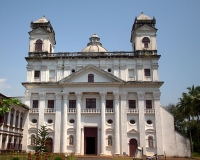
Old Goa
Old Goa was the state's capital city until 1843, when it was moved down river to Panaji. Once a byword for splendour, with a population of several hundred thousand, Old Goa was vir…
Old Goa
Old Goa was the state's capital city until 1843, when it was moved down river to Panaji. Once a byword for splendour, with a population of several hundred thousand, Old Goa was virtually abandoned from the 17th century, as the river silted up and a series of malaria and cholera epidemics drove out the inhabitants. It takes some imagination to picture the once-great capital as it used to be. The maze of twisting streets, piazzas and grand Portuguese villas have long gone. All that remains are a score of extraordinarily grandiose churches and convents. Old Goa has been declared a UNESCO World Heritage Site, and today is the state's main cultural attraction.
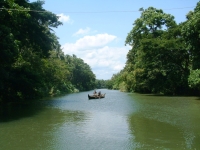
The Backwaters of Kerala
One of the most memorable experiences for many travellers in Kerala is a boat journey on the state's famous backwaters. The best known of these areas is Kuttanad, situated between …
The Backwaters of Kerala
One of the most memorable experiences for many travellers in Kerala is a boat journey on the state's famous backwaters. The best known of these areas is Kuttanad, situated between the hills in the west and the Arabian Sea, and stretching for 50 miles south of Kochi (formerly Cochin). This extraordinary maze of rivers, lakes, canals and estuaries is lined with dense tropical greenery and reveals a Keralan lifestyle that is totally hidden from the road. Boats are the only way to explore this area, billed as Kaleidoscope Kerala, where views change around every bend.
Website www.keralatourism.org/destination/backwater
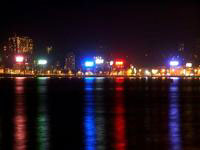
Mumbai
Mumbai (formerly Bombay) is India's economic powerhouse, and home to more millionaires than any other city on the Indian subcontinent. The city contains a breathtaking array of Hig…
Mumbai
Mumbai (formerly Bombay) is India's economic powerhouse, and home to more millionaires than any other city on the Indian subcontinent. The city contains a breathtaking array of High Victorian buildings, reflecting the British passion for the Gothic and demonstrating the wealth, panache and confidence of British Bombay. Mumbai's countless attractions are reached via the iconic colonial-era arch that is the Gateway of India. Nearby stands the Taj Mahal Palace, India's second most-photographed monument, and the equally imposing Chhatrapati Shivaji Maharaj Terminus, an extravagant Gothic building. For those seeking a break from the madness of modern Mumbai, the 180-year-old village of Khotachiwadi offers a quiet glimpse into life as it was before the high-rise buildings of today's mega-city.
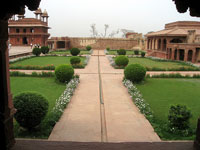
Fatehpur Sikri
The deserted city of Fatehpur Sikri was the capital of the Mughal Empire between 1570 and 1585. It was built under the personal supervision of the Emperor Akbar. The story goes tha…
Fatehpur Sikri
The deserted city of Fatehpur Sikri was the capital of the Mughal Empire between 1570 and 1585. It was built under the personal supervision of the Emperor Akbar. The story goes that the emperor was childless and, having tried all sorts of solutions to his plight, visited a Sufi saint, Sheikh Salim Chishti, for help. Soon a son was born, and Akbar started building on the site where he had met the saint. However, due to a severe shortage of water the city was abandoned after only fifteen years, and the capital was relocated back to Agra. Today Fatehpur Sikri is an untouched and perfectly preserved medieval fortress.
Kolkata
Kolkata is India's third-largest city, and home to some of the country's holiest temples and finest colonial structures. The 'Cultural Capital of India' is a diverse city with a di…
Kolkata
Kolkata is India's third-largest city, and home to some of the country's holiest temples and finest colonial structures. The 'Cultural Capital of India' is a diverse city with a diverse mixture of languages spoken among its 14 million inhabitants. It was also home to Mother Teresa, whose humble home can still be visited, and the famous writer Rabindranath Tagore. Kolkata is a city of many cultural attractions and some impressive colonial architecture. A deeply religious city representing several faiths, some striking temples often top the list of things to see in Kolkata.
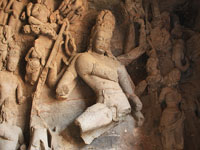
Elephanta Caves
Located on Elephanta Island in the Arabian Sea off the coast of Mumbai, the Elephanta Caves are a UNESCO World Heritage Site and an absolute must for visitors to Mumbai. The island…
Elephanta Caves
Located on Elephanta Island in the Arabian Sea off the coast of Mumbai, the Elephanta Caves are a UNESCO World Heritage Site and an absolute must for visitors to Mumbai. The island can be reached by an hour-hong boat ride from the Gateway of India pier. The caves feature Shaivistic (the oldest of the four sects of Hinduism) stone sculptures of Hindu deities important to worshippers of Shiva. Unfortunately, the Portuguese defaced many of the sculptures in the caves when they used them for target practice in the 17th century. However, there is still a lot of intricate and impressive art to see.
Website www.elephanta.co.in/how-to-reach-elephanta-caves
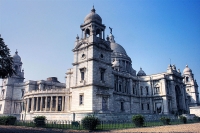
Victoria Memorial
This astounding marble building is probably the most impressive colonial structure in India. In a city known for several great monuments and buildings, this palace is often conside…
Victoria Memorial
This astounding marble building is probably the most impressive colonial structure in India. In a city known for several great monuments and buildings, this palace is often considered the primary architectural gem and most iconic landmark. It was built to commemorate Queen Victoria (although she never actually visited the city) and only completed in 1921, after 20 years of solid work. Inside is a fascinating museum of Indian history, including some wonderful sculptures and paintings. The monument is situated on 64 acres of land, which includes lakes, gardens and walking paths.
Website www.victoriamemorial-cal.org
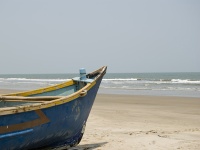
Goa Beaches
Goa has some amazing beaches, and draws a steady stream of local and international tourists. In the north, Anjuna Beach once played host to hordes of hippies, but is now home to a …
Goa Beaches
Goa has some amazing beaches, and draws a steady stream of local and international tourists. In the north, Anjuna Beach once played host to hordes of hippies, but is now home to a number of trendy beach bars as well as the famous Wednesday Market. The new hippie haven, Arambol beach, is also good for dolphin viewing and paragliding. With its white-sand beaches, Agonda in the south is a quiet stretch of beach with a few souvenir stalls and restaurants, while Benaulim Beach, south of Colva, is known for its fishing and laid-back atmosphere. The shady palm trees and soft sands of Palolem Beach, also known as Paradise Beach, are backpacker territory.
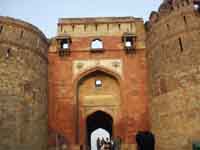
Delhi
Delhi is a city of contrasts, where an elephant can overtake a snazzy Italian sports car on the streets, where commanding colonial mansions stand next to overcrowded slums, and whe…
Delhi
Delhi is a city of contrasts, where an elephant can overtake a snazzy Italian sports car on the streets, where commanding colonial mansions stand next to overcrowded slums, and where cows are revered but musicians are labelled 'untouchable'. The city's pace is chaotic, yet strangely relaxed, making it ideal for exploring. Visitors are almost certain to have some strange and exotic experiences. The city is full of fascinating temples, museums, mosques and forts, each with a distinctive architectural style. In Old Delhi, visitors will find a charming selection of colourful bazaars and narrow winding alleys. In comparison, New Delhi, the city created to reflect the might of the British Empire, consists of tree-lined avenues, spacious parks and sombre-looking government buildings.
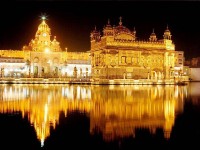
Golden Temple of Amritsar
Considered one of the most beautiful temples in the world and the veritable heart of the Sikh religion, it's no wonder tourists come from all over the globe to see the Golden Templ…
Golden Temple of Amritsar
Considered one of the most beautiful temples in the world and the veritable heart of the Sikh religion, it's no wonder tourists come from all over the globe to see the Golden Temple of Amritsar. Situated in the middle of a sacred lake fed by an underground spring, the golden structure is a unique blend of Hindu and Muslim architectural styles. Within the temple is the Adi Grantha, the sacred scripture of the Sikhs, which is displayed on a jewel-studded platform. Visitors to the Golden Temple can enjoy the serene and spiritual atmosphere, which includes the sound of Sikh hymns accompanied by flutes, drums and stringed instruments.
Website www.goldentempleamritsar.org/
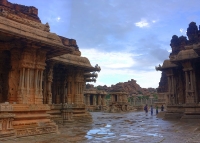
Hampi
The small, relaxed town of Hampi not only boasts one of the weirdest, most awe-inspiring landscapes in the whole of India, but is also a fascinating historical site. The capital of…
Hampi
The small, relaxed town of Hampi not only boasts one of the weirdest, most awe-inspiring landscapes in the whole of India, but is also a fascinating historical site. The capital of the once-great Vijayanagar Empire, the ruins of the 14th-century village and temple complex found in present-day Hampi have been declared a UNESCO World Heritage Site. However, as impressive as these ruins are (especially the multi-tiered, ornately sculpted Virupaksha Temple), the grandstand attraction of Hampi remains its natural landscape: a severe, desolate and boulder-strewn wilderness, tempered by a slate-grey river surrounded by lush groves of banana, mango and palm trees.
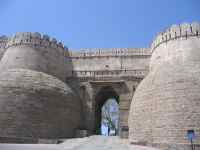
Kumbhalgarh Fort
Kumbhalgarh is a massive Mewar fortress built in the 15th century, with seven heavily fortified gateways and a perimeter wall that extends a staggering 22 miles (36km); possibly th…
Kumbhalgarh Fort
Kumbhalgarh is a massive Mewar fortress built in the 15th century, with seven heavily fortified gateways and a perimeter wall that extends a staggering 22 miles (36km); possibly the second longest continuous wall in the world. Inside this intimidating complex there are more than 360 temples (300 ancient Jain and the rest Hindu) in addition to the main palace. The fortress has immense sentimental significance for local inhabitants because it is the birthplace of Mewar's legendary king, Maharana Pratap. Needless to say, one can spend hours exploring this architectural and historical playground, and those who enjoy climbing will find many opportunities. The views from the many vantage points of this fortress are astounding.
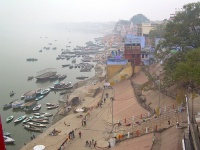
Varanasi
Varanasi has seen human settlement as far back as the 11th century BC. The 'city of light' is an intense mix of colour, sights, sounds and smells. Among many astonighing sights are…
Varanasi
Varanasi has seen human settlement as far back as the 11th century BC. The 'city of light' is an intense mix of colour, sights, sounds and smells. Among many astonighing sights are the more than 100 ghats (literally 'steps') leading down into the Ganges. These are the sites of bathing and burning, where intimate rituals of life and death can be witnessed in public. Manikarnika Ghat is the most auspicious place for a Hindu to be cremated. Dasaswamedh Ghat (the 'ghat of ten sacrificed horses') is the liveliest and most colourful ghat, where every evening visitors can witness the ganga aarti (river worship) ceremony. Assi Ghat, where the river Assi meets the Ganges, is an important site of worship for pilgrims who come to pay homage to the god Shiva.
Dotted around the ghats are numerous temples, the highlight being the Golden Temple, with its resplendent towers. Varanasi is world-famous for its silks, and silk brocades, and does a roaring trade with pilgrims and tourists alike. The city is home to many poets, musicians, novelists and philosophers. Visitors are strongly encouraged to spend some time in the city's tea-houses and local restaurants, where they are guaranteed to be embroiled in some fascinating conversations.


